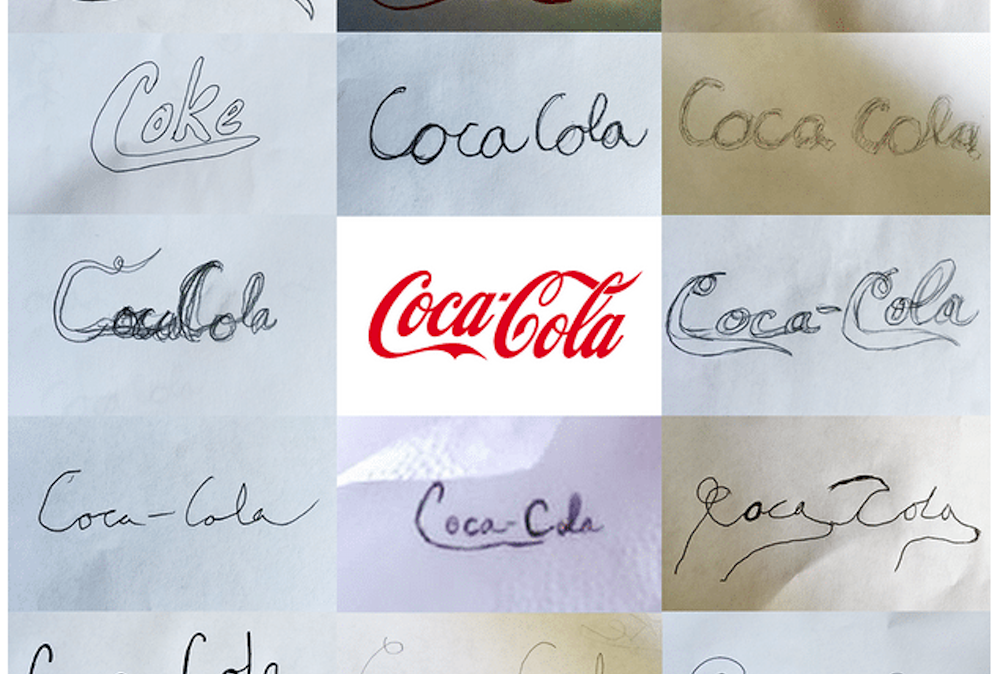Every company has a brand, whether they make it a priority or not. Simply defined, a brand is what people think about you – the impressions they have when hearing or seeing your name. In most cases your brand is reflected initially in your logo mark, then supported by your messaging. These experiences influence attitudes and opinions about your company, nonprofit, school, product, service, etc.
A good brand is built over time and requires thought, strategy and consistent implementation. For the purposes of this article, I’m going to assume you have a “good” brand, or at least the beginnings of one. But hopefully you want more than just a good brand.
To take your good brand to the next level, let’s take a look at a great one.
Coca-Cola is a great brand.
In 2010, Coca-Cola spent $2.9 billion on advertising. By 2013, with a budget of $3.3 billion, their CEO began laying plans to increase that amount to $4.3 billion by 2016.
He called it “Brand Building Initiatives”
From the name to the logo, from the product to the messaging, everyone knows Coca-Cola. It has been said that “Coca-Cola” is one of the most widely recognized terms worldwide, eclipsed only by the word “okay.”
Interestingly, their logo has remained largely unchanged since the 1900s. The script font and classic red are recognizable all over the world, even when displayed in different languages. Even with a massive ad budget, the sheer scale of this branding phenomenon would be unsustainable without an unwavering commitment to consistency.
For Coca-Cola maintaining “brand consistency” is a strategic commitment that is in many ways just as vital to their success as their secret formula. In fact, exporting their messaging is so important to Coke that they spend more on branding annually than Apple and Microsoft combined – all so we, the consumers, will prefer their brand. This consistency extends across every medium, every advertisement, every package, every bottle, every aluminum can.
Does consistency matter to you and your brand?
I don’t know for sure, but I would guess that there are probably two rules at Coca-Cola that, upon being broken, would result in a very bad day for the offender:
- Don’t change the formula.
- Don’t change the brand.
I assume your marketing budget is slightly smaller than Coca-Cola’s. However, as you evaluate your brand – your logo, your messaging, your reputation – what can you learn from Coke’s commitment to consistency? Here are a few insights from this designer’s perspective to get you started:
- Consistency helps you manage perceptions. By thinking carefully and deliberately about your brand you can shape how people perceive your organization. Consistency connotes professionalism, purpose and stability.
- Consistency conveys your outlook and attitude. A focused effort to establish and maintain consistent branding will deliver a very specific set of impressions: Are you serious? Are you intentional? Do you follow through? Are you focused?
- Consistency eliminates issues surrounding brand confusion. For many companies, their branding is actually more of a hindrance than a help. A consistent brand should instill confidence rather than engender confusion.
- Consistency protects your investment. Without established brand standards, many organizations spend thousands of dollars crafting a logo and building a message, only to have it degraded by inconsistent, sloppy application. Build equity in your brand by being consistent.
- Consistency builds upon previous successes. No one has to guess, “I wonder what this Coca-Cola will taste like?”
Bear in mind your brand is not for everyone. It’s intended to be effective with only a specific segment of the market. These are the people who value what your organization does, makes, delivers, etc. These people will sit up and take notice of organizations that value consistency. They care about the promises your brand makes to them. They make buying decisions everyday based on their perceptions of brand quality. For these reasons and more, it’s easy to correlate the significance of brand consistency.
“Draw the Coca-Cola logo,” I said.
I asked every member of the North Star team to draw the Coca-Cola logo as best they could from memory. I wanted to see for myself how well their investment in branding was paying off. The results were interesting.

- I immediately knew which of my friends were artists and which were not. Clearly some do not have a future in graphic design whatsoever. (Don’t worry, we won’t let them work on any of North Star Marketing’s client logo projects…)
- Without exception, everyone knew and recognized the brand. No one asked me, “Now, who is Coca-Cola, and what do they sell?”
- Interestingly, despite a $3.3 billion budget and probably having seen the logo thousands of times, no one drew the logo perfectly (though, one was very close).
- The majority of people could recreate the brand in a fashion that was generally recognizable.
All of these responses are a direct result of intentional, purposeful brand initiatives. If consistency is that important to Coca-Cola, then surely we can learn some valuable lessons from this global brand that executes with remarkable precision.
A few helpful tips to help you maintain brand consistency:
- Don’t read “consistency” as “boring.” Do you think working on Coke ad campaigns is boring? Consistency actually paves the way to creativity with impact.
- Communicate to your team the importance of your brand. Start the conversation by asking them to name a few companies they admire and why.
- Create a “Brand Standards Guide” – the guidelines that map out how your logo, fonts, colors, tagline, etc. will be used. Make it visual with proper and improper usage examples. It has to be simple and easy to follow, or it won’t have the intended impact.
- Go through the Brand Standards Guide with your entire team and provide print and PDF copies for them to reference as needed.
- Provide access to the proper logo file types to anyone who needs them. Your team members shouldn’t be recreating your logo on the fly.
- Hold your people accountable and retrain if necessary. It’s okay to appoint some team members to be the “brand police” who flag down offenses and keep the peace.
Consistency is a crucial step towards brand success
When something works well, you almost don’t notice it – sort of like the best referees. You’re so into the game that you can almost forget they’re on the court or field. However, when something doesn’t work, doesn’t fit, everyone feels it. It’s the same way with your brand. You can cause yourself and your team a lot of long-term problems simply by not paying attention to brand consistency.
So, protect your brand. Set in motion a structure for keeping it sharp and consistent. Value what it represents for your organization.
Coca-Cola’s tagline in 1993 was “Always, Coca-Cola.”
You don’t have to be in marketing (or spend $3.3 billion annually) to recognize the value and importance of that.
Does Your Brand Need Direction?
Designing, developing and managing a brand can be a daunting task. If you need help getting your brand in place or just need some direction, contact us North Star Marketing today. Our team of creative professionals can help keep your brand on the path to success.


